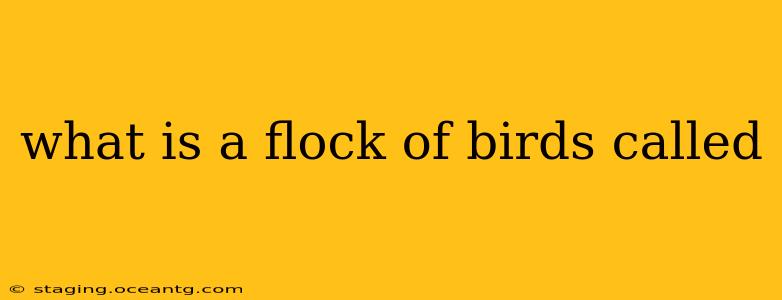The simple answer is: a flock. But the beauty of the avian world lies in its diversity, and just as there are countless species of birds, there are many different collective nouns to describe groups of them. While "flock" is the most common and widely accepted term, the specific name often depends on the type of bird. This article delves into the fascinating world of avian group names, exploring the nuances and reasons behind the diverse terminology.
Why Are There Different Names for Groups of Birds?
The variety in collective nouns for birds isn't arbitrary. Historically, these names evolved based on the birds' behavior, appearance, and the cultural significance they held. Some names vividly depict the bird's flight patterns, while others reflect their social structures or the sounds they make. The language itself played a role, with different cultures developing their unique terms for bird gatherings.
What are Some Other Names for Groups of Birds?
While "flock" is a general term encompassing many species, here are some more specific examples:
-
Murder of crows: This evocative name likely originated from the crows' perceived ominous nature and their tendency to gather in large, noisy groups. The stark contrast between the peaceful image of a single crow and the chaotic impression of a murder highlights the power of collective nouns to convey specific characteristics.
-
Business of ferrets: Though not birds, this example highlights the concept of collective nouns reflecting the subject’s activities. Ferrets, known for their bustling, busy nature, perfectly suit the term “business.” Similarly, bird group names often reflect their actions, like the next entry.
-
Exaltation of larks: Larks, known for their soaring, uplifting songs, are beautifully described by "exaltation," a word suggesting joy and elevation. This showcases how collective nouns can evoke a feeling or ambiance related to the animal group.
-
A parliament of owls: This sophisticated term for a group of owls reflects their wise and seemingly deliberative nature. The word "parliament" suggests a gathering of individuals engaged in serious discussion, fittingly representing the owls' contemplative image.
What is a Group of Geese Called?
A group of geese is called a gaggle. This term reflects the characteristic honking and noisy behavior of geese. The sound itself contributes to the collective noun, making the name more memorable and evocative.
What is a Group of Swans Called?
A group of swans is called a bevy. This elegant term suits the graceful and beautiful nature of swans, suggesting a collection of attractive and refined creatures.
What is a Group of Ducks Called?
A group of ducks is often called a brace (for two), a paddling (a playful term), or a team (less commonly used). The variations here reflect the varied behavior and social interactions of different duck species.
Conclusion: The Rich Tapestry of Avian Group Names
The naming conventions for groups of birds offer a fascinating insight into human observation, language, and cultural interpretation. While "flock" remains the most general term, understanding the specific names for different species enriches our appreciation of the natural world and the creative power of language. The next time you see a group of birds, take a moment to consider the rich history and descriptive power behind the names used to describe them.
